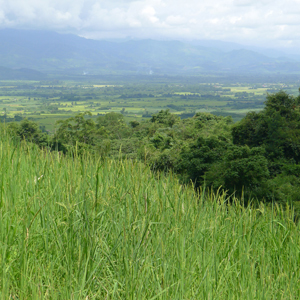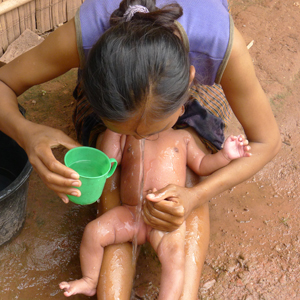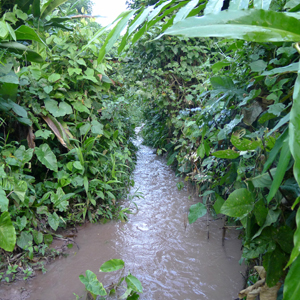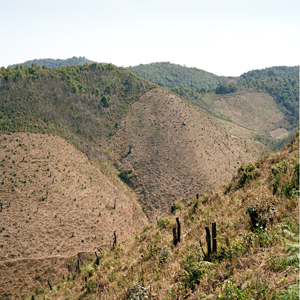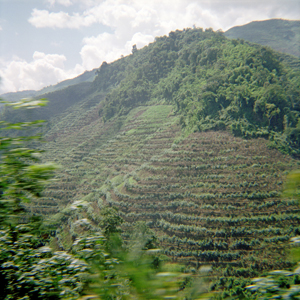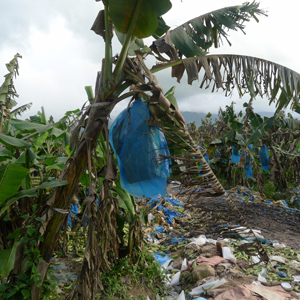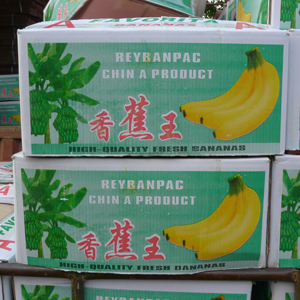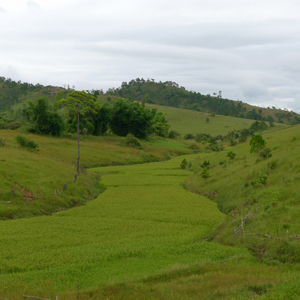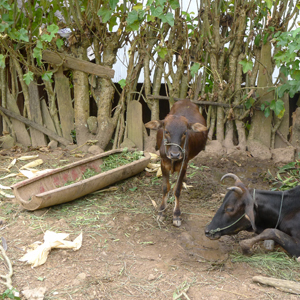Landslides and leeches
By Tessa Bunney on 14 October 2011Whether or not you can classify landslides and leeches as highlights of travelling in Laos at the end of the rainy season, they certainly were the reality of the last 2 weeks as I travelled in Northern Laos by road and on foot.
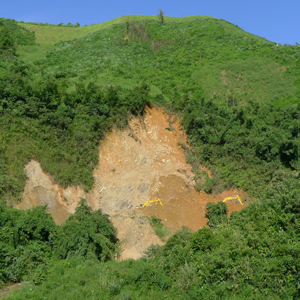
Not much went to plan. I’d wanted to try to photograph the cotton harvest but I was a little too early because the rainy season is running late but it meant that the landscape of forest and rice field looked amazing and the skies were often clear unlike much of the rest of the year.
This trip was funded by Arts Council England and was a research visit – so as such exploration was intended. Laos is one of the most ethnically diverse countries in South East Asia with more than 49 ethnic groups.
I stayed at villages of 4 different minorities: Akha, Lanten, Khmu and Hmong which meant I could experience life in the village and accompany the farmers to their upland rice fields and forest gardens. This sounds quite straightforward but in reality this meant wading through rivers, climbing up near vertical muddy paths through the jungle and leeches!
Some of the villages I visited had already been relocated from the mountains often as a consequence of the government’s efforts to eradicate slash and burn cultivation which they have traditionally practiced and although this has given them greater access to education and roads, this assimilation process is contributing to the erosion of their unique traditions and cultures. Others were still high in the mountains several hours walk from the nearest road or market.
Part of what I have been doing in China and Laos over the past couple of years is recording some of the textile traditions of the minority women and photographing some of the last women to wear their traditional clothing every day as the 21st century infiltrates into every corner of these often still isolated communities.
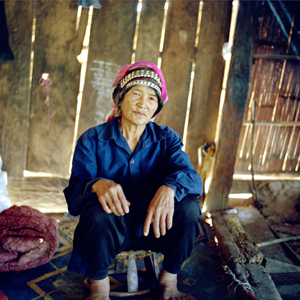
It was when we came down from the mountain that we stopped wearing our traditional costume every day
My original interest in returning to Laos was sparked by meeting three Aini (Akha) women in Yunnan Province who had walked several kilometres across the border in Laos to sell their produce in China. It has been fascinating to see the differences between similar villages either side of the border – the first thing that strikes you when you visit a village in China is the relative lack of children compared to other countries in the Southeast Asia region. In China minorities are permitted to have 2 children in contrast to the one child policy applied to the Han majority, in Vietnam the minorities are not restricted to the 2 child policy for the rest of the population although some minorities like to adhere to this too and in Laos with its comparatively small population of only around 6 million people it can be a frenzy of kid activity in the villages!!
For centuries, swidden cultivation was an important farming practice found across much of Southeast Asia. Swiddening has always been characterised by change but today these systems are changing and sometimes disappearing at a pace never before experienced. In this area the farming system is shifting from a subsistence slash and burn system to an intensive market orientated one relying on labour, fertilizer and pesticide input resulting in a decline in the biodiversity of the natural tropical rain forest and agriculture.
I can clearly remember the initial shock of driving through miles upon miles of rubber plantations in the south of Yunnan and it seems like this area of Laos is going the same way. My journey started from the Thai border in Bokeo province and I then spent a week travelling in Luang Namtha province which borders China, an area where Chinese influence on agriculture can be dramatically seen.
In the second week we travelled along the mountainous and winding road for 7 hours from Luang Prabang to Xieng Khouang province and as we got close to Phonsavan the landscape suddenly changes. The paddy fields are among a landscape of grassy hills and pine trees – you could almost believe you were still in Europe!
Xieng Khouang Province hides a completely different story within its landscape. It is one of the most bombed provinces in the most heavily bombed country, per capita, in the world. More than 2 million tonnes of ordnance was dropped on Laos between 1964 and 1973, up to 30% of which did not detonate.
Almost 40 years later, many people in heavily bombed areas of Laos still collect scrap metal as they lack alternative ways of earning a living. The metal collected is mainly war related scrap including UXO (Unexploded Ordnance) making the trade one of the main causes of UXO accidents. It’s very difficult in such a short space of time to get a deep understanding of the impact for the rural communities, but suffice to say unexploded ordnance is still an ongoing threat in many provinces and an obstacle to development.
“Every house utilises the remnants of war. Every bucket and watering can is made from aluminium rocket canisters and flare tubes, many with warning stickers such as ‘set fuses’ still attached. Alloy tubes for dispensing cluster bombs are fashioned into ladders, aircraft fuel tanks into boats. Hundreds of casings from cluster bomb units (CBUs) surround the houses to prevent rainwater eroding the ground. Some are lined up to make fences or laid on the ground to serve as pig troughs.” Laos: Legacy of a Secret / Sean Sutton / MAG
This project is ongoing and it needs direction and much, much more time so any feedback is appreciated. These images are mostly digital snapshots, when the ‘film’ work comes back from the lab I will create a gallery of images.
Supported by:
